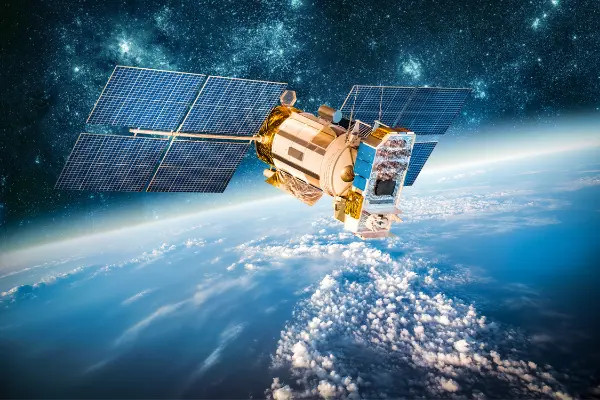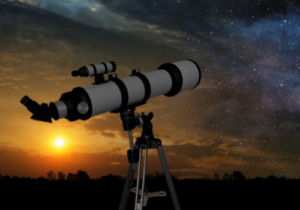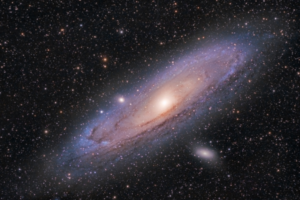Can You See Satellites With A Telescope
Since the launch of Sputnik in 1957, humans have been hurling tons of stuff into earth orbit. More than 2,500 vehicles have been launched and there are over 35,000 objects larger than 10 cm being tracked by NASA. Some of these objects are active satellites (communications, research, weather, spy, etc) while others are junk from launch vehicles. That’s a lot of stuff!
Key Takeaways:
Can you see satellites with a telescope?
Yes, depending on the size, you can clearly see satellites with a telescope. The two of the brightest satellites that you can see even without a telescope are the Hubble Space Telescope and the International Space Station (ISS), the largest manmade object in Earth orbit. When the position of the sun and the orbit of these satellites are just right, they can easily be seen. The ISS can appear as bright as Venus.
Although, TV satellites live in geosynchronous orbits approximately 22,000 miles (35,420 km) away, so it is impossible to see them unless you have a big telescope.
However, there are lots of satellites that pass overhead in asynchronous orbits that are only 200 or 300 miles away. If you live in a place that has a very clear sky, simply lie on your back on a moonless night and look carefully. Occasionally you will see something that looks like a star, but it is moving. That’s a satellite!
Here is a list of budget friendly telescopes under $200 that you can use to look at satellites from Earth’s surface.
How Many Satellites Can You See?
Out of 35,000 satellites now in orbit around Earth, there are a large portion of manmade satellites that can be seen with the naked eye. Sightings can number up to a hundred in a single night if you have good viewing conditions. Here is a database of all the satellites in the world.
What does a satellite look like from the Earth?
To identify a satellite you are looking for a star that looks like it is slowly moving across the night sky. On average they are visible for several minutes although some can be present for longer.
The important thing to note is that unlike a plane, most satellites do not ‘blink’ or flash (unless they reflect the light of the Sun directly towards Earth, such as an Iridium flare). They remain a steady brightness and follow consistent speed and direction across the sky.
Here is a list of beginner friendly telescopes that you can use to see the larger satellites from Earth.

How To See Satellites From Earth
Satellites don’t have exterior lights. Even if they did, the lights wouldn’t be bright enough to see from the ground. When you spot a satellite, you are actually seeing reflected sunlight. The ISS has a huge array of reflective solar panels that reflect a lot of sunlight, making it easy to see.
Unless you are spotting the super bright ISS, you need to be away from city lights. Head out to the country. The best time to spot satellites is just after dark or before dawn when the sun is a few degrees below the horizon.
Which Other Satellites Can You See From Earth
Along with the ISS, you can also look for
- China’s Tiangong-1 space laboratory,
- Hubble Space Telescope
- Russia’s Soyuz and Progress spacecraft,
- SpaceX’s Dragon and
- Orbital ATK’s Cygnus capsules
How To See ISS With A Telescope
During the northern summer, when the nights are the shortest, the time that a satellite in a low-Earth-orbit (like the ISS) can remain illuminated by the sun can extend throughout the night – a situation that can never be attained during other times of the year.
Because the ISS circles the Earth about every 90 minutes on average, this means that it’s possible to see it not just on one singular pass, but for several consecutive passes.
Moreover, because the ISS revolves around the Earth in an orbit that is inclined 51.6-degrees to the equator, there are two types of passes that are visible.
In the first case – “Type I” pass, the ISS initially appears over toward the southwestern part of the sky and then sweeps over toward the northeast.
About seven or eight hours later, it becomes possible to see a second type of pass – “Type II”, but this time with the ISS initially appearing over toward the northwestern part of the sky and sweeping over toward the southeast.
ABOUT US
We are a team of active amateur astronomers, here to help you with all your astronomy and science related needs – this is anything, from reviewing the latest telescopes to be released to talking about gravity and neurons. The Big Bang Optics was started because of our love for astronomy and to help others like us find the best telescope and accessories.
LEGAL DISCLAIMER
The Big Bang Optics is a participant in the Amazon Services LLC Associates Program, an affiliate advertising program designed to provide a means for sites to earn advertising fees by advertising and linking to Amazon.com. The Big Bang Optics also participates in affiliate programs with Clickbank and other sites. The Big Bang Optics is compensated for referring traffic and business to these companies.




